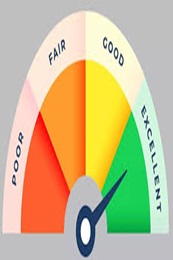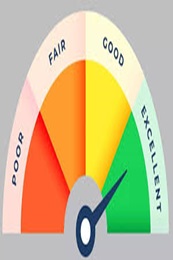Mastering Your Finances with the 50/30/20 Rule: A Comprehensive Guide to Budgeting
April 15, 2025

Managing your finances might feel like a complex task, but the 50/30/20 rule is a straightforward, efficient, and effective way to gain control over your money. By following this rule, you can allocate your income in a manner that ensures you're living comfortably while also saving for the future. Here’s everything you need to know about the 50/30/20 rule and how you can apply it to your life.
What is the 50/30/20 Rule?
The 50/30/20 rule is a popular budgeting strategy that divides your income into three main categories, each with its own purpose:
- 50% for Needs: These are essential expenses that are necessary for survival and basic functioning.
- 30% for Wants: These are discretionary expenses that enhance your lifestyle but are not necessary for basic living.
- 20% for Savings and Debt Repayment: This portion focuses on building your financial future, whether that means saving for an emergency fund, retirement, or paying off existing debts.
The 50/30/20 rule is incredibly flexible and can be adjusted to suit individual circumstances. However, the core principle remains the same: balancing your needs, wants, and savings in a way that promotes financial stability and growth.
Breaking Down the 50/30/20 Rule: How It Works
1. 50% for Needs
Needs are essential expenses that are unavoidable and necessary for your day-to-day life. These are your "must-have" expenditures, meaning they are not optional.
Examples of needs include:
- Housing: Rent or mortgage payments are typically the largest portion of your needs.
- Utilities: Electricity, water, internet, and phone bills.
- Groceries: Essential food and household items.
- Transportation: Public transport or car-related expenses like fuel, insurance, and maintenance.
- Insurance: Health, car, and life insurance premiums.
- Childcare/Education: Tuition fees, daycare costs, or any educational expenses.
For instance, if your after-tax income is ₹100,000, here’s how you would allocate 50% for needs:
- Housing: ₹30,000
- Utilities: ₹5,000
- Groceries: ₹10,000
- Transportation: ₹5,000
- Insurance: ₹5,000
Total for needs = ₹55,000
This represents half of your monthly income. Your "needs" should always be prioritized since they are vital to maintaining your basic lifestyle.
2. 30% for Wants
Wants are things that improve your lifestyle but aren’t essential. This category includes anything that’s nice to have but not necessary for survival.
Examples of wants include:
- Dining Out: Going to restaurants, ordering takeout, or grabbing a coffee.
- Entertainment: Movie tickets, concerts, subscriptions like Netflix, etc.
- Vacations: Travel, lodging, and leisure expenses.
- Shopping: Clothing, gadgets, and accessories.
- Hobbies: Sports, fitness memberships, or other activities you enjoy but don't need to live.
If we go back to our example of ₹100,000 monthly income, here’s how you would allocate 30% for wants:
- Dining Out: ₹5,000
- Entertainment: ₹5,000
- Shopping: ₹5,000
- Subscriptions (Netflix, Spotify, etc.): ₹5,000
Total for wants = ₹30,000
While you can live without these expenses, they make life more enjoyable and help reduce stress. That’s why the 30% allocation is often viewed as a balanced approach to living within your means while still enjoying life’s pleasures.
3. 20% for Savings and Debt Repayment
This portion of your budget is meant for building your financial future. It helps you prepare for emergencies, save for retirement, and pay off debt. By setting aside this amount, you’re giving yourself the tools to live a more secure life and avoid future financial struggles.
Examples of savings and debt repayment include:
- Emergency Fund: Money saved for unexpected events like job loss, medical emergencies, or urgent repairs.
- Retirement Savings: Contributions to pension plans or 401(k) accounts (or their Indian equivalents such as PPF, NPS), Fixed Deposits, etc.
- Debt Repayment: Credit card bills, student loans, or personal loans.
- Investments: Stocks, mutual funds, or real estate investments.
For the same ₹100,000 monthly income, here’s how you would allocate 20% for savings and debt repayment:
- Emergency Fund: ₹5,000
- Retirement Savings: ₹5,000
- Debt Repayment: ₹5,000
Total for savings and debt repayment = ₹20,000
Building your savings helps create a buffer in case of emergencies, and it allows you to accumulate wealth over time. Paying off debt frees you from the burden of interest payments and improves your credit score.
Real-Life Application: Making the 50/30/20 Rule Work for You
To see how this works, let’s consider an individual named Ananya, who earns ₹75,000 a month after taxes:
1. 50% for Needs: ₹37,500
- Rent: ₹20,000
- Groceries: ₹7,000
- Utilities (Electricity, Internet, etc.): ₹3,500
- Transportation (Fuel, Insurance, etc.): ₹3,000
- Insurance: ₹4,000
2. 30% for Wants: ₹22,500
- Dining Out: ₹5,000
- Entertainment (Movies, Music, etc.): ₹3,000
- Shopping (Clothing, Accessories, etc.): ₹7,000
- Gym Membership: ₹3,500
- Subscriptions (Streaming services, etc.): ₹4,000
3. 20% for Savings and Debt Repayment: ₹15,000
- Emergency Fund: ₹5,000
- Retirement Savings (NPS, PPF): ₹5,000
- Credit Card Repayment: ₹5,000
How Fixed Deposits Can Contribute to the 50/30/20 Rule
Fixed Deposits (FDs) can play an important role in the 50/30/20 rule, especially in the 20% savings and debt repayment category. Let's break down how FDs fit into the rule:
1. FDs for Building Savings (20%)
The 20% of your income allocated for savings and debt repayment is crucial for financial security. Within this category, Fixed Deposits (FDs) can be an excellent option to grow your savings with minimal risk. Here’s how:
- Emergency Fund: FDs can be a safe place to park your emergency fund. The advantage of FDs is that they are low-risk and offer guaranteed returns over the investment period. This makes them an ideal choice for funds you may need in case of an emergency but don’t want to risk losing.
- Retirement Savings: You can use FDs as a part of your retirement savings strategy. By choosing long-term FDs, you can accumulate a substantial sum with guaranteed interest, ensuring you have a steady income post-retirement.
- Tax-Saving FDs: Tax-Saving Fixed Deposits (under Section 80C) can help you save on taxes, while also earning interest. Allocating some of the 20% towards tax-saving FDs can reduce your taxable income while contributing to your long-term financial growth.
2. FDs as a Conservative Investment
If you’re a conservative investor, FDs can provide a way to secure a portion of your savings with fixed returns, which makes them suitable for conservative investors.
3. FDs for Debt Repayment
If you have high-interest debt, you could also consider using part of the 20% allocation to pay off your debts. Though FDs offer guaranteed returns, the returns might not be as high as the interest you're paying on some types of debt (like credit card debt). Therefore, it’s essential to strike a balance between paying off high-interest debt and saving in FDs.
Example:
Let’s take an example of someone following the 50/30/20 rule with a monthly income of ₹75,000:
- Needs (50%): ₹37,500
- Wants (30%): ₹22,500
- Savings and Debt Repayment (20%): ₹15,000
Out of this ₹15,000, you might allocate ₹5,000 to an emergency FD, ₹5,000 to a retirement FD, and ₹5,000 for paying off high-interest debt.
Disclaimer: The above examples are for illustration purposes only and shouldn’t be construed as an investment advice. Please consult a SEBI-registered financial adviser to make informed financial decisions.
Why FDs Are Useful in the 50/30/20 Rule
- Low Risk: Fixed Deposits are safe investments and are ideal for people who want to grow their savings without taking on significant risk.
- Guaranteed Returns: Unlike market-linked investments (like stocks or mutual funds), FDs offer guaranteed returns. This makes them an excellent choice for a portion of your savings where security is paramount.
- Flexibility: You can choose the tenure and amount to invest in FDs, allowing you to align them with your specific financial goals, whether it’s for emergency savings or retirement.
How to Incorporate FDs into the 50/30/20 Rule Effectively
- Short-Term FDs: You could use short-term Fixed Deposits (3 months to 1 year) for your emergency fund. This ensures liquidity while earning higher returns than a regular savings account.
- Long-Term FDs: If you're aiming for long-term goals like retirement or education, long-term FDs (1 year or more) can offer a higher rate of return, which will compound over time.
- Tax-Saving FDs: If you're looking to reduce your taxable income, consider allocating some of your savings (from the 20% savings category) to a tax-saving FD under Section 80C of the Income Tax Act.
Benefits of the 50/30/20 Rule
1. Simple and Easy to Follow
The 50/30/20 rule breaks down your finances into three manageable categories, making it easier to track and control your spending.
2. Promotes Financial Stability
By dedicating 20% of your income to savings and debt repayment, you're prioritizing long-term financial security.
3. Balance Between Enjoyment and Responsibility
Allocating 30% for wants allows you to enjoy life without going overboard, while 50% ensures your essential needs are always covered.
Final Thoughts
The 50/30/20 rule is an easy-to-implement financial strategy that helps you balance spending and saving while ensuring that you live within your means. Whether you're just starting to budget or you're looking for a way to improve your financial health, this rule provides a simple roadmap to manage your money more effectively. By prioritizing needs, enjoying life through discretionary spending, and securing your future with savings and debt repayment, you’ll be well on your way to achieving financial stability and growth.
Kick-start your financial journey with Ujjivan. Save more with our high-interest Savings Account and Deposit products. Need cash for your business or personal needs? Apply for MSME Loans or Micro Loans with us – we offer competitive rates and quick disbursal. We also offer vehicle loans and home loans tailored for your unique requirements. Experience a smooth banking journey with Ujjivan SFB!
FAQs
1. Can I adjust the 50/30/20 percentages?
Yes, depending on your financial goals and lifestyle, you can adjust the percentages. For example, if you have more debt, you might want to allocate more to debt repayment and less to discretionary spending.
2. What if my needs exceed 50% of my income?
If your essential needs are taking up more than 50%, consider reducing discretionary expenses or increasing your income.
3. Should I prioritize savings over paying off debt?
High-interest debts should typically be paid off first, but if your debt is manageable, building savings can offer a financial cushion.
4. Can I use this rule if I have an irregular income?
Yes, it can be adjusted to work with irregular income by averaging your earnings over a few months and budgeting accordingly.
5. How do I categorize expenses like child support or education fees?
These can be categorized as "needs" since they are necessary for your dependents' well-being.
6. Should I invest in stocks, mutual funds, or real estate using my savings?
If you're new to investing, mutual funds or PPF are safer options, while stocks and real estate can be considered if you're comfortable with higher risks.
7. How do I stick to the 50/30/20 rule?
Track your expenses regularly using budgeting apps or spreadsheets. The key is consistency and sticking to your financial goals.
8. What if I have multiple sources of income?
Add up all your incomes and apply the 50/30/20 rule to the total. This gives you a holistic view of your finances.
9. Is the 50/30/20 rule suitable for everyone?
The rule is a good starting point for most people, but your financial situation might require adjustments. For instance, if you're saving aggressively for retirement, you might want to allocate more than 20% to savings.
10. How often should I review my budget?
It's a good idea to review your budget at least once a month or after any major life changes, like a new job or a significant expense.
Latest Blogs

Telangana Housing Board & KPHB Colony: A Guide to Affordable Urban Housing in Hyderabad
March 14, 2025
As Telangana continues its rapid urbanisation journey, two key housing entities—Telangana Housing Board (THB) and Kukatpally Housing Board Colony (KPHB)—have played critical roles in shaping the state's real estate ecosystem.

Does Checking CIBIL Score Frequently Lower Your Credit Points?
April 07, 2025
Imagine you're planning to apply for a home loan, a credit card, or even a car loan. Naturally, you want to ensure your CIBIL score is in good shape before proceeding.

Explained: Can NRIs Buy an Agricultural Land in India?
April 03, 2025
Real estate investment is often a top priority for Non-Resident Indians (NRIs) looking to retain strong financial ties to India.

How to Improve Your CIBIL Score from 600 to 750: A Step-by-Step Guide
April 02, 2025
Your CIBIL score is like your financial reputation—banks check it before approving loans or credit cards. If your score is hovering around 600, you might face difficulties in securing credit or may get loans with higher interest rates.

What Happens When You Leave Your Savings Account Unused?
April 01, 2025
Imagine waking up one day to find that your hard-earned money is locked away and inaccessible. Sounds stressful, right? This is precisely what happens when you leave your Savings Account inactive for too long.



